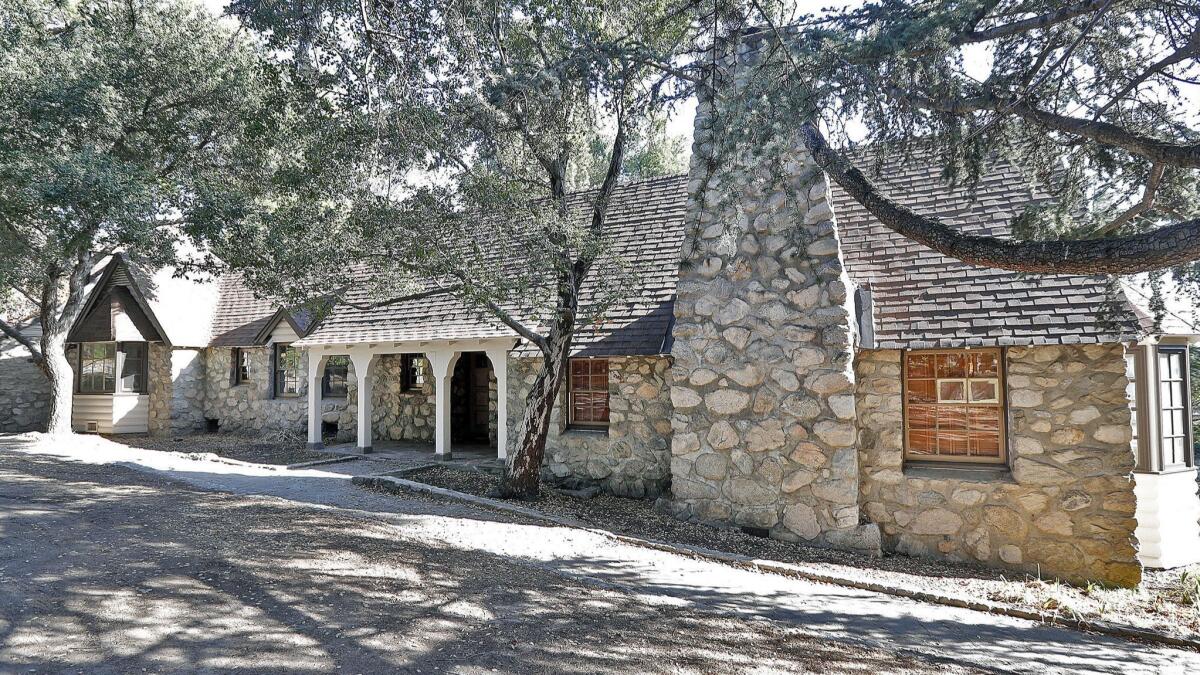How old is historic? La Cañada Flintridge council looks at draft preservation ordinance

Members of the La Cañada Flintridge City Council took issue with the Planning Department Tuesday night when, during the latest study session on the city’s draft historic preservation ordinance, they learned that staff is still using an age threshold in determining the historical significance of structures in the city.
After more than an hour of discussion, the council agreed to come back next month with a resolution to address the original list of already historically designated properties before further codifying the ordinance. They also expect to learn at the time new estimates for a consultant to do an in-depth “windshield” survey of all the potential historic properties in the city.
A major incentive for property owners to preserve historic structures is the possibility of receiving Mills Act designation and taking advantage of the state incentives program designed to encourage the restoration and preservation of such properties. Qualifying properties approved by the City Council pay reduced property taxes. In 2015, city officials approved increasing tax breaks for homeowners who registered their historic property under the Mills Act, providing property tax deductions.
The city has considered Mills Act applications on a case-by-case basis, requiring owners to conduct a historical analysis for all properties over 50 years of age when a permit for construction is sought.
Given that there are thousands of such properties in a city where a post-World War II building boom took place, the 50-year threshold is considered by some to be overly broad, forcing unwanted delays in remodeling.
The city has grappled with historic preservation since a March 2014 “preservation report card” issued by the Los Angeles Conservancy gave La Cañada and 50 other cities in Los Angeles County a failing grade, in part, for its lack of an established preservation program.
Last October, a mayor’s subcommittee was formed to create an inventory of historic places in La Cañada and adopt regulations that would catch and potentially preserve valuable homes before they were demolished.
According to Planning Department staff, they prepared a mitigation monitoring plan in conjunction with the city’s forthcoming general plan update, which requires action be taken to mitigate the potential loss of a possible “historic resource” in the city.
Due to concerns about the 50-year trigger for determining if a structure is historically significant — which encompasses approximately 5,500 structures in the city — staff and the subcommittee considered increasing the commonly used age threshold. According to their most recent report, there are approximately 80 properties already recognized as historic.
A second “potential historic properties” list was created of approximately 100 homes, and more could be added as they are discovered.
Mayor Terry Walker took issue with the draft ordinance, noticing the language in the “penalties” section stood out more than any incentives available to homeowners for historic designation.
Walker called the draft ordinance “very restrictive,” citing a previously packed council meeting where people voiced strong opposition to penalties. “I thought we were making a list to notify them and build incentives. I don’t like direction we’re going in.”
Director of Community Development Robert Stanley said his department is taking the past direction of the City Council, and for every home coming into the Planning Department, they are preparing a historical report.
“This was trying to take us away from that process,” he said about the staff and subcommittee’s work on the mitigation monitoring plan. “Then once we decided on this ordinance, we can amend the general plan with it.”
While City Atty. Mark Steres said he did not see any complaints from property owners whose projects have been delayed while a historic review is underway, Councilmen Greg Brown and Jon Curtis maintained there have been some.
“They’re scared to talk to staff because they think the staff may do something against them if they come back,” Curtis said.
Lanterman House annual report received
Also at Tuesday’s meeting, the council agenda listed in its consent calendar to receive and file the Lanterman House Museum annual report. The conditional use permit governing the museum’s operation requires annual review by the city to determine that conditions of approval are still being met. The report indicates 428 fewer visitors than last year and cites a combination of a loss of a partner in events, the recently folded Jewel City Choir, and lower overall attendance attributed to hot summer and fall months.
Stanley to retire, Koleda to step in
In other news, it was announced it was Stanley’s final City Council meeting as director of community development. He plans to retire on April 30 after more than 21 years serving the community. Deputy Director of Community Development Susan Koleda accepted an offer to take over for Stanley’s position, beginning May 1.
Matt Sanderson is a contributing writer to Times Community News.